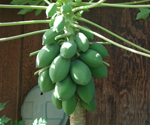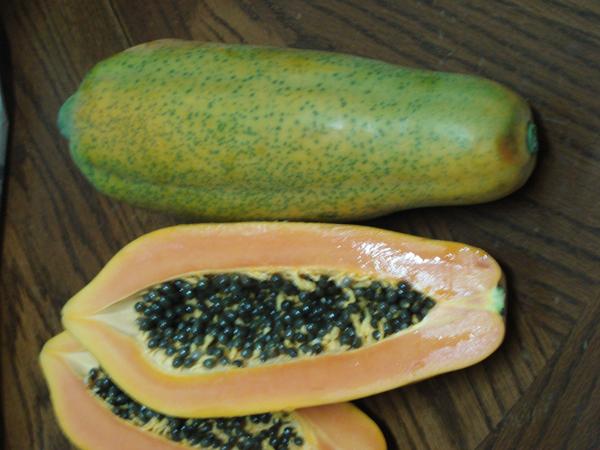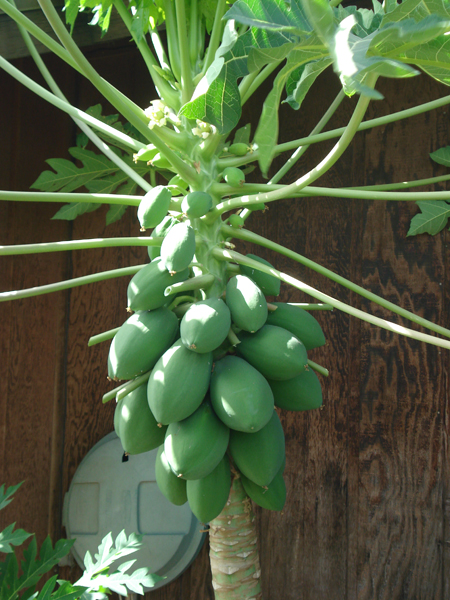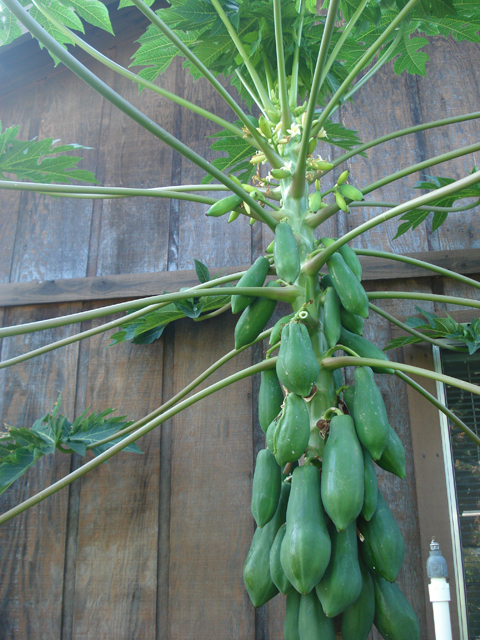Frost Protection: Papayas need warmth and a frost-free environment, but can often withstand light freezes with some kind of overhead protection. This can be provided by building a frame around the plants and covering it with bedding, plastic sheeting, etc.
When frost threatens. Electric light bulbs can also be used for added warmth. Potted specimens can be moved to a frost-secure area. Prolonged cold, even if it does not freeze, may adversely affect the plants and the fruit. Mexican papayas are more hardy than Hawaiian varietie
Propagation: Papayas are normally propagated by seed. To start a plant, extract the seeds from ripe papayas and wash them to remove the gelatinous covering. They are then dried, dusted with a fungicide and planted as soon as possible (the seeds loose their viability rapidly in storage).
Plant the seeds in warm (80กใ F), sterile potting mix. Seeds should be planted in sterile soil as young papaya seedlings have a high mortality rate from damping off. Potting soil can be sterilized by mixing 50-50 with vermiculite and placing in an oven at 200กใ F for one hour.
Seedling papayas do not transplant well. Plant them in large containers so the seedlings will have to be transplanted only once,
Papaya plants can also be grown from cuttings, which should be hardened off for a few days and then propped up with the tip touching moist, fertile soil until roots form.
|





